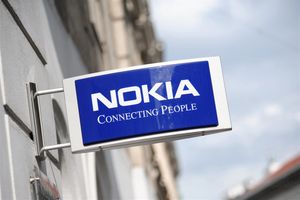
The digital world has been shaken repeatedly in October 2025, as Amazon Web Services (AWS) experienced a series of significant outages, casting a harsh spotlight on the inherent vulnerabilities of highly centralized cloud infrastructure. These disruptions, particularly affecting the critical US-East-1 region, have crippled a vast array of online services, from gaming and social media to financial platforms and even smart home devices, underscoring the profound and far-reaching impact of cloud reliability on global commerce and daily life. The immediate aftermath has seen millions of users disconnected and businesses facing substantial economic losses, prompting urgent questions about the resilience of the very foundations of the internet.
The most severe incident unfolded on October 20, 2025, lasting approximately six hours and causing widespread havoc. This was followed by another notable disruption on October 29, 2025, further exacerbating concerns. These recurring failures highlight that despite the immense benefits of cloud computing, the concentration of critical services within a few massive data centers presents a systemic risk, where a single point of failure can trigger a cascade of global consequences.
Unpacking the Technical Fault Lines: A Deep Dive into AWS's Recent Struggles
The October 20, 2025, outage was attributed by AWS to a complex interplay of technical failures rooted primarily in the US-East-1 region. The root cause was identified as a "latent defect" within DynamoDB’s automated Domain Name System (DNS) management system. A race condition, where two automated systems attempted to update the same data simultaneously, resulted in an incorrect, empty DNS record for DynamoDB's regional endpoint. This crucial error prevented applications from resolving API names to IP addresses, rendering many AWS APIs unreachable and effectively isolating a vast segment of the internet.
Compounding this, an automated change to DynamoDB's request routing subsystem led to inconsistent DNS responses, while an internal monitoring subsystem for network load balancers mistakenly marked healthy endpoints as offline. This trifecta of cascading automated failures created a perfect storm, impacting core AWS services such as DynamoDB (a managed database service), EC2 (virtual servers), and S3 (storage). The repercussions were immediate and extensive, affecting major platforms like Fortnite, Roblox, Snapchat, Signal, Reddit, Slack, Coinbase, Robinhood, and Venmo. Even Amazon's own services, including Amazon.com (NASDAQ: AMZN), Prime Video, Alexa, and Ring doorbell cameras, were not immune, along with critical services for airlines like United (NASDAQ: UAL) and Delta (NYSE: DAL).
These incidents differ from previous, more isolated outages by their recurring nature within the same critical region and the complex, automated origins of the failures. While previous outages might have stemmed from hardware failures or human error, the October 2025 events underscore the new challenges posed by hyper-automated, interdependent cloud architectures where subtle software defects or race conditions can propagate with devastating speed. Initial reactions from the AI research community and industry experts have focused on the need for greater architectural diversity and a re-evaluation of single-region dependencies, with many expressing surprise at the vulnerability of such a mature and robust system.
Ripple Effects: How AWS Outages Reshape the Cloud Competitive Landscape
The recurring AWS outages have sent shockwaves through the tech industry, impacting companies of all sizes, from nascent startups to established tech giants. The most immediate consequence for businesses relying on AWS has been significant economic losses. The October 20th outage alone is estimated to have caused between $38 million and $581 million in insured losses, with some analysts suggesting the global economic impact, factoring in lost sales and idle workers, could run into the hundreds of billions of dollars. Companies found themselves unable to serve customers, process transactions, or maintain internal communications, leading to reputational damage and direct financial hits.
These disruptions place immense pressure on AWS (NASDAQ: AMZN) to bolster its infrastructure and communication protocols. For other major cloud providers like Microsoft Azure (NASDAQ: MSFT) and Google Cloud Platform (NASDAQ: GOOGL), these events present a competitive opportunity. While no cloud provider is entirely immune to outages, a perception of recurring instability in AWS could drive enterprises to diversify their cloud strategy, adopting multi-cloud or hybrid-cloud approaches to mitigate single-vendor risk. This shift could benefit competitors, as companies seek to distribute their workloads across different providers or bring certain critical functions back in-house.
The outages also highlight the operational challenges for businesses during downtime. The inability to access AWS consoles or tools during an outage can severely hamper recovery efforts, extending the period of disruption. This scenario forces companies to reconsider their disaster recovery plans, emphasizing resilience beyond what a single cloud provider offers. Startups, often built entirely on AWS due to its scalability and ease of use, face existential threats during such events, as their entire service stack can become inaccessible, potentially alienating users and investors. The market positioning of AWS, which commands approximately 30% of the global cloud infrastructure market, is now under intense scrutiny, compelling them to demonstrate a clear path to enhanced resilience.
Broader Implications: A Wake-Up Call for Global Digital Resilience
The recurring AWS outages of October 2025 serve as a stark reminder of the broader fragility of the internet's underlying infrastructure and the systemic risks associated with hyper-centralization. In an increasingly interconnected world, where everything from smart home devices to critical financial transactions relies on cloud services, these disruptions underscore the profound societal impact of a single point of failure. The fact that a significant portion of the modern internet is powered by a handful of centralized providers like AWS means that even localized issues can have global repercussions, affecting millions of users and disrupting essential services.
These events fit into a broader trend of increasing scrutiny on the resilience of digital infrastructure. While cloud computing offers unparalleled scalability, flexibility, and cost-efficiency, it also centralizes risk. The US-East-1 region, in particular, has repeatedly been the epicenter of major AWS outages, including incidents on November 25, 2020 (Amazon Kinesis), December 7, 2021 (AWS Service Event), June 13, 2023 (AWS Lambda), and July 30, 2024 (Amazon Kinesis Data Streams). The recurrence of issues in this specific region, despite AWS's continuous efforts to improve, raises fundamental questions about architectural design and the limits of redundancy within a single geographical area.
Concerns extend beyond immediate downtime to the long-term implications for digital trust and economic stability. If core internet services can be intermittently crippled by cloud failures, it necessitates a re-evaluation of how critical national infrastructure and essential public services are hosted. Comparisons to previous AI milestones and breakthroughs, which often focus on advancements in capability, are now juxtaposed with the foundational challenge of ensuring reliable access to these capabilities. The outages force a crucial dialogue about distributed systems, regional diversification, and the ethical responsibilities of dominant cloud providers in maintaining a stable global digital ecosystem.
Charting the Course Ahead: Future-Proofing Cloud Infrastructure
In the wake of these significant outages, the cloud industry is expected to see several key developments aimed at enhancing resilience. In the near term, there will likely be an intensified focus on improving internal monitoring, automated recovery mechanisms, and diversifying critical services within AWS's own infrastructure, particularly in regions like US-East-1. AWS will undoubtedly be under immense pressure to release detailed post-mortems and implement robust preventative measures to restore confidence.
Longer-term developments are likely to include a significant push towards multi-cloud and hybrid-cloud adoption strategies across enterprises. Businesses will increasingly seek to avoid single points of failure by distributing their workloads across multiple cloud providers (e.g., AWS, Azure, GCP) or by integrating on-premise infrastructure with cloud services. This will necessitate the development of more sophisticated multi-cloud management tools and orchestration platforms that can seamlessly shift workloads and data between environments during disruptions.
Challenges that need to be addressed include the inherent complexity of distributed systems, the difficulty in identifying "latent defects" within highly automated environments, and the economic and operational overheads of implementing true multi-cloud resilience. Experts predict that the industry will move towards more resilient architectural patterns, such as active-active multi-region deployments and advanced chaos engineering practices to proactively test system weaknesses. The emphasis will shift from simply "moving to the cloud" to "moving to a resilient cloud architecture," with a greater focus on regional isolation and independent failure domains.
A Critical Juncture for Cloud Computing: The Path Forward
The recurring AWS outages of October 2025 represent a pivotal moment in the history of cloud computing, serving as a stark reminder that even the most advanced digital infrastructures are not infallible. The key takeaway is the critical importance of resilience, not just at the application level, but at the foundational cloud infrastructure level. The hyper-centralization of workloads, particularly in a single dominant region like US-East-1, has been exposed as a significant systemic risk, capable of causing widespread economic disruption and societal inconvenience.
These events underscore that while cloud computing offers unparalleled agility and scalability, it also introduces new failure modes. The reliance on complex automated systems, while generally efficient, can lead to spectacular cascading failures when latent defects or race conditions emerge. This development's significance in cloud history lies in its potential to accelerate a paradigm shift from a single-vendor cloud-first approach to a more diversified, multi-cloud, and hybrid-cloud strategy across the industry. It's a wake-up call for enterprises to critically assess their dependency on any single provider and to invest in robust disaster recovery and business continuity plans that account for broad cloud service disruptions.
In the coming weeks and months, the tech world will be watching closely for AWS's comprehensive response, including any architectural changes, new resilience features, and enhanced communication protocols. We can also expect increased innovation in multi-cloud management platforms and a renewed industry-wide focus on building truly fault-tolerant digital ecosystems. The ultimate long-term impact will likely be a more mature and resilient cloud landscape, driven by the hard lessons learned from the vulnerabilities exposed in October 2025.
This content is intended for informational purposes only and represents analysis of current AI developments.
TokenRing AI delivers enterprise-grade solutions for multi-agent AI workflow orchestration, AI-powered development tools, and seamless remote collaboration platforms.
For more information, visit https://www.tokenring.ai/.





